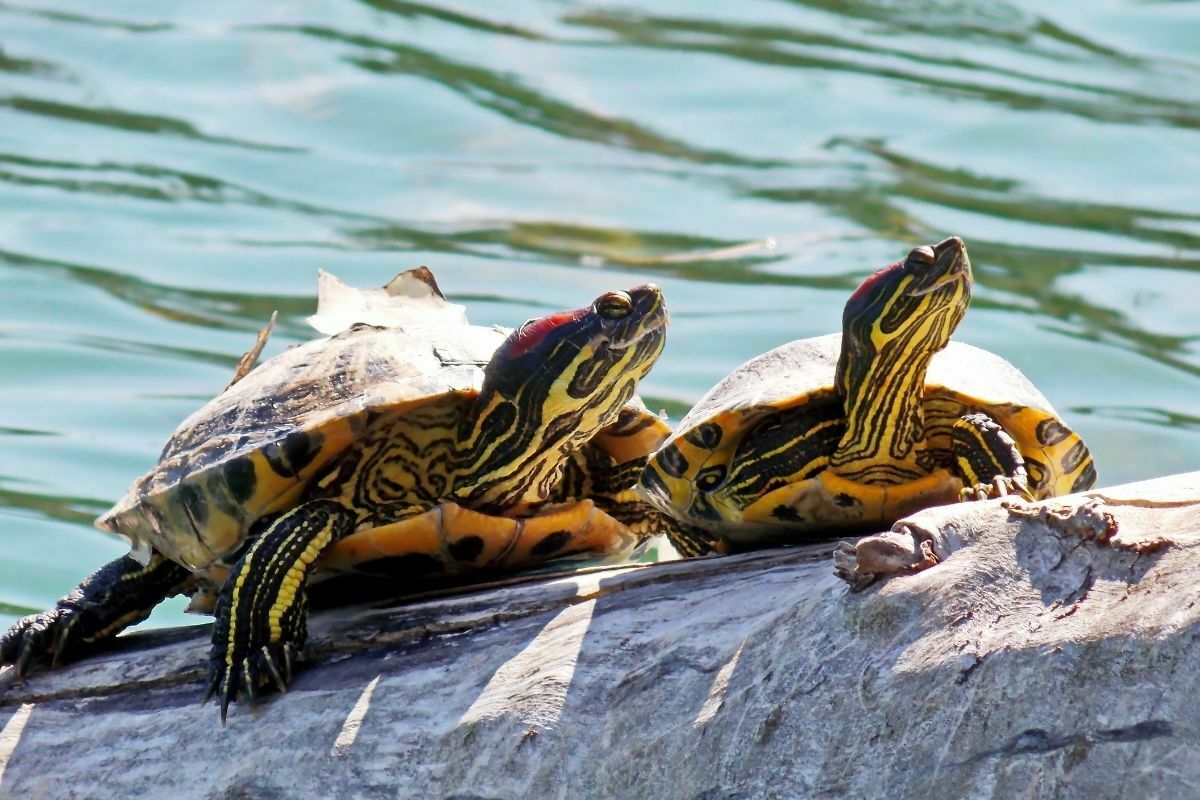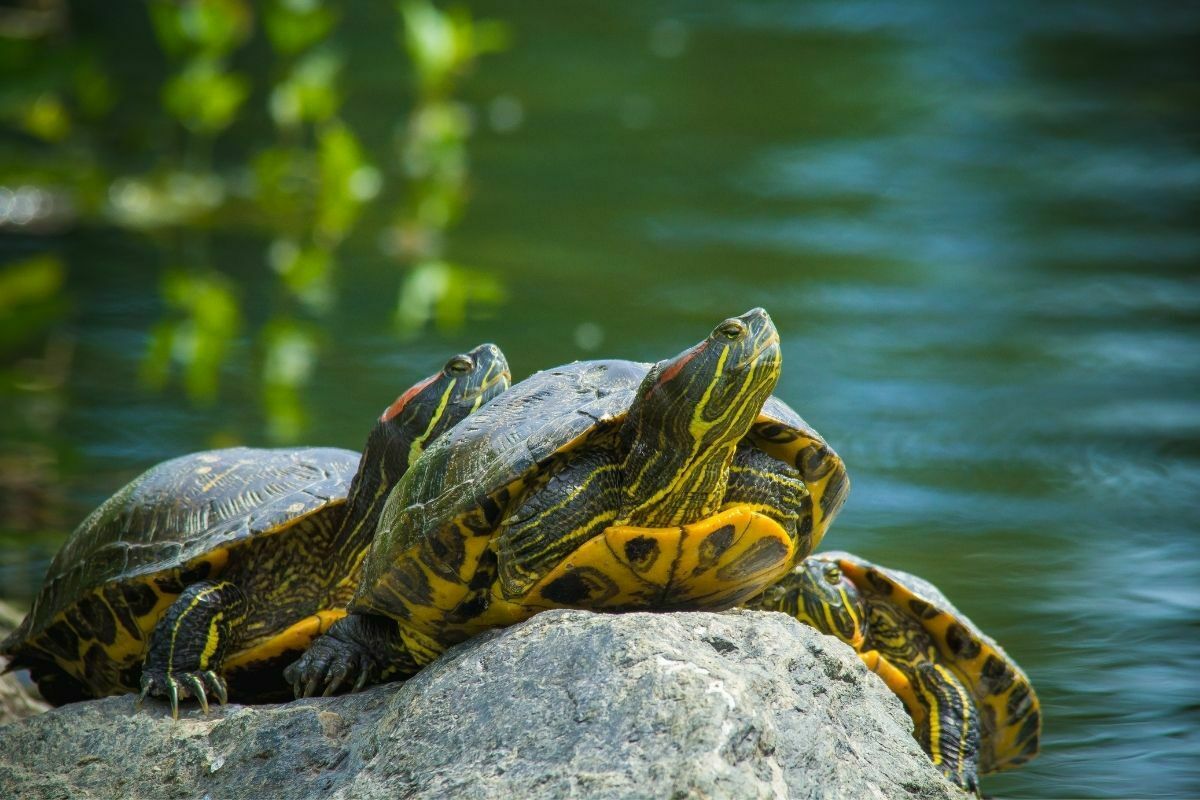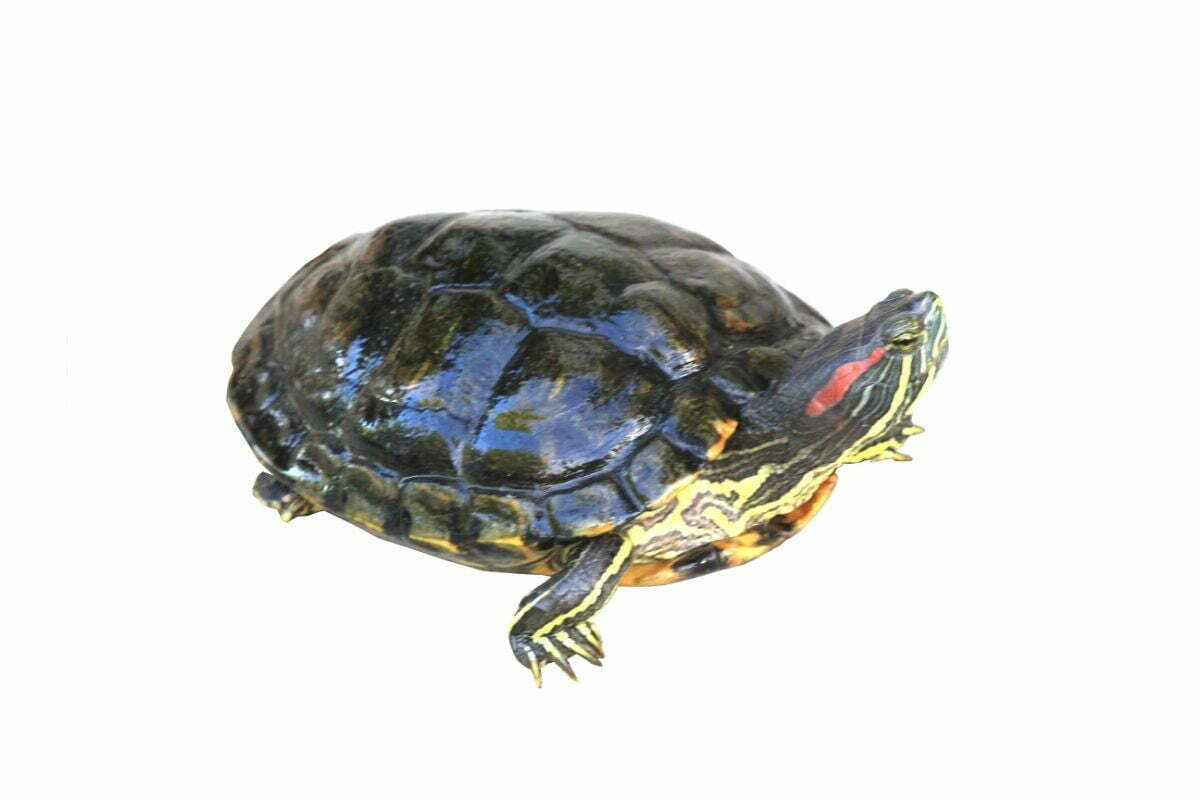It is perhaps no wonder that the Red-Eared Slider is such a popular turtle species to have as a pet.
They can be so quiet and undemanding that they require little attention yet can look after themselves in the face of harsh conditions.
As a reptile that can do so well in the face of adversity, you may be wondering how long it can go without water.

The Red-Eared Slider is known as being semi-aquatic, just as any other turtle is. However, one main difference is how it leaves the water to enjoy some basking on the land for longer.
Its semi-aquatic status means that the turtle can thrive without water for a long time, even up to a week or longer.
However, any longer and you may be risking your turtle’s health. In this guide, we will look at the ideal water conditions for a Red-Eared Slider, what can happen when it is out of the water, how it can go without water for a long time, and how long it can go without water.
The Ideal Water Conditions For A Red-Eared Slider
As a semi-aquatic turtle species, the Red-Eared Slider spends a large part of its time in the water, though not as much as when compared to a sea turtle.
The water helps the turtle to regulate its body temperature. They will also prefer to eat there as the conditions aid digestion and can help avoid choking.
Drinking water itself can also support the turtle’s metabolic processes. Outside of its time in the water, you can expect the turtle to bask to dry out its shell and skin under the warm sunshine.
When you are looking after a turtle, one of your considerations should be the water conditions. The Red-Eared Slider needs fresh water and for a baby, it should be at around 80°F. For an adult, the water should be at a temperature of between 76 and 78°F (25°C).
Be mindful to check the water temperature often with a digital thermometer though you may need a portable heater to ensure the water reaches the optimum temperature.
While a Red-Eared Slider may be one of the more durable reptiles, it still requires some help and care from its owner. That is if you want it to live to a grand old age, even over 20 years for some.
There are some simple measures that you can take to look after your Red-Eared Slider, and something as easy as changing the water can make a huge difference.
Like most creatures, this turtle can be messy, so changing the dirty water with distilled water can remove the bacteria that results from food particles being left.
Distilled water will also be de-chlorinated water, so it is beneficial to a turtle as an alternative to tap water. The chlorine can be detrimental to a turtle, so you could use a water conditioner before exposing the water to your turtle.
A water filter can also be installed in the tank to help maintain the availability of clear water.
The amount of water is also important as a Red-Eared Slider requires a substantial amount to maintain its health.
A small bowl simply will not do, and a good rule to follow is to provide about 10 gallons of water per inch of the turtle’s shell. You only need to measure vertically from bottom to top.
For a Red-Eared Slider, you can expect their shell to grow between six and eight inches which equates to around 60 to 80 gallons in an aquarium.
The size of the aquarium is vital to ensure that your Red-Eared Slider has enough water to enjoy. Not only do you need to ensure it has a sufficient amount of water, but the dimensions are both wide and deep.
The more water, the better if you want the turtle to enjoy its time in the water. It should also enjoy its basking time so ensure there is a ramp for the turtle to climb as it may get tired and need some assistance.
Regularly changing the water is one thing, yet the temperature is a huge concern as the Red-Eared Slider cannot regulate its body temperature.
With a water heater, you can increase the water temperature to the desired level to ensure that the turtle does not suffer when it needs the water. This is especially important in winter when the water temperature naturally lowers.
You should also consider getting a UV lamp in the cold winter months. This is another way of assisting the turtle when it comes to maintaining its health when the prevalent conditions require some extra assistance.
While there may not be much exposure to the sun when the turtle is basking, a UV lamp can provide the vital vitamin D which is necessary for the turtle to maintain its shell and ensure its development.
What Can Happen When A Red-Eared Slider Is Out Of The Water

Even though a Red-Eared Slider should enjoy its time out of the water, it may struggle to do so. The environment’s temperature goes a long way in determining how the turtle fares, which has a lot to do with the reptile’s body.
As a cold-blooded reptile with a body of around 70 to 78% water, the turtle is unable to control its body temperature independently. It is up to its owner to make sure that the environment is just right.
If the heated environment is too hot then the turtle can shrivel as it loses excess body water on the shell and limbs.
This can be a quick process if the heated environment is exceptionally hot so it may only be out of the water for a couple of minutes and having fresh water nearby is worth considering.
When the Red-Eared Slider is out of the water in a cooler environment, it can still lose body water but at a comparatively slower rate so it can spend more time outside.
Then there are the effects of humidity to consider, which also go some way to determining how long the Red-Eared Slider spends out of the water.
At higher humidity, the turtle can spend longer basking as there is less chance of water loss. Rain and fog can cause more humidity, whereby a turtle can retain its moisture, particularly on the shell.
The Circumstances Where A Red-Eared Slider Can Go Without Water For A Long Time
A Red-Eared Slider can go just over a week without water in normal circumstances. However, other circumstances can mean that the turtle goes a whole six months without water and still be fine.
During a brumation period in winter, the turtle effectively shuts down as nothing grows which could be considered food.
In winter, while the turtle is brumating, its body metabolism will drop, and it will largely seem inactive. With less movement and less requirement to use up its energy, the turtle will not require sustenance.
Their heart rate will drop as it only requires a single beat every couple of hours to remain alive. With such low activity levels, the turtle can go longer without its regular activity, so it does not need water or even go outside to bask, as it would be cold anyway.
How Long Can A Red-Eared Slider Stay Out Without Any Water?

You should only be prepared to give your Red-Eared Slider a few days out of the water and just over a week at most, though this will be a shorter time for baby turtles that rely on the water.
The turtle requires access to water for its metabolism, digestion, and hydration so it is a necessity. The longer a Red-Eared Slider spends out of the water, the more chance of dehydration though high humidity can help.
Under typical conditions, a Red-Eared Slider may spend even a few months without water yet this would not be considered healthy.
However, as the turtle brumation almost shuts down its body mechanisms, you may find that you do not see your Red-Eared Slider go near the water for up to six months which is a natural occurrence during winter.
Frequently Asked Questions
How Long Can Turtles Generally Stay Out Of The Water?
You should be aware that, in general, turtles cannot be out of the water for too long. This period of going without water can largely depend on the surrounding environment and the species it belongs to.
In cooler temperatures, the turtle can be out of the water for around eight hours. This is largely due to the dependence on water for their digestion, hydration, and metabolism.
Without access to water, the turtle can suffer severe dehydration and then encounter issues with its digestion.
Is Regular Basking Required For Red-Eared Sliders?
A Red-Eared Slider will require regular basking, yet not so much as a terrestrial tortoise. As a semi-aquatic creature, it spends a fair amount of time outside of the water, so make sure it can enjoy its basking time.
It should enjoy a ramp to get out of the water easily and some rocks which may retain some of the outside heat. However, a UV lamp may be necessary if you cannot allow your Red-Eared Slider to venture outdoors so that it still maintains the vital vitamin D.
Why Do Red-Eared Sliders Need To Be In The Water?
This species of turtle does need to be in the water as they lack saliva, so use the water to swallow, which is vital for their digestion. Though they can live and eat without water, it is an increasingly difficult task.
The water is also necessary for their hydration and overall health as they are semi-aquatic creatures.
Final Thoughts
A Red-Eared Slider should find basking and spending time in the water as essential as eating. While you can typically leave the turtle to do as it pleases, you may want to keep an eye on it.
Too much time outside of the water can be detrimental to their overall health and, specifically, their shell.
Also, try to work out if your Red-Eared Slider gives you the impression that it does not want to go into the water, as it may indicate that you need to do something as its owner. It may be that the water is dirty and needs changing or that the turtle is unwell.
If the turtle is one of several pets that share the water in an aquarium, then it may be suffering from bullying, and you may need to find another water source.
However, if the Red-Eared Slider is going through brumation, it will not require water as its body effectively shuts down during this period which can mean up to six months without water.
